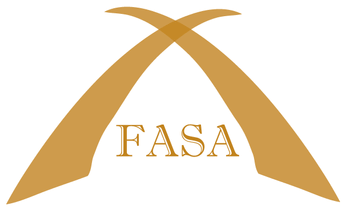ED FAFSA INVITE: 1/22 Conversation with ED Deputy Secretary Cindy Marten on 2025-26 FAFSA
We are sharing information here on a meeting the Department of Ed is hosting on Friday to share some new FAFSA resources and continue to answer questions. We hope you will consider attending if you are available, and we also encourage you to share this information with your counselors, other school leaders, and anyone who may be assisting students with their FAFSA applications in the school community – RSVP here for the meeting.
Full details and linked resources are below!
You are invited to join Deputy Secretary Cindy Marten on Friday, November 22, at 12:15pm ET for a virtual conversation on the 2025-26 Free Application for Federal Student Aid (FAFSA®). She will use the time to align on completion efforts, including resources available through the Department. Please register for the call here.
Background:
A new Electronic Announcement includes information about new and updated resources for institutions, state aid agencies, software vendors, supporting organizations, and students and families as they begin their preparations for the 2025–26 Free Application for Federal Student Aid (FAFSA®) cycle. It also includes information about recent technical fixes to the FAFSA form and system. The Department is on track to make the 2025–26 FAFSA form broadly available by Dec. 1.
New and Updated Resources for the 2025–26 FAFSA Cycle
In preparation for increased activity once the 2025–26 FAFSA form is broadly available by Dec. 1, the U.S. Department of Education (Department) has been applying lessons learned from both the FAFSA Beta period and 2024–25 cycle to make improvements to the resources and contact centers used by students and families. These improvements include updates to the Aiden® virtual assistant to reflect 2025–26 information. They also include investments in training and staffing levels at the Federal Student Aid Information Center (FSAIC), including an increase in the number of agents by more than 80% and the addition of evening and Saturday hours during the first few months that the 2025–26 FAFSA form is broadly available.
ED announces the availability of the following resources—released throughout the fall—that will assist our partners in preparing for and navigating the 2025–26 FAFSA cycle:
- 2025–26 FAFSA Roadmap—Highlights key dates for the FAFSA form launch, as well as timelines for the release of resources to assist our partners.
- 2025–26 FAFSA Preview Presentation—Provides financial aid administrators, advisors The presentation deck contains screenshots that highlight changes to the online 2025–26 FAFSA form.
- 2025–26 FAFSA Prototype—Provides the financial aid community an advance opportunity to gain a deeper understanding of the FAFSA user experience ahead of its broad release.
- Federal Student Aid Estimator—Provides an estimate of the 2025–26 Student Aid Index (SAI) and Federal Pell Grant eligibility calculation.
- “Who’s the Parent on the FAFSA Form?” Wizard—A new, stand-alone tool to help students and families determine who will need to provide contributor information on the 2025–26 FAFSA form prior to starting the application.
- “Creating Your StudentAid.gov Account” Page—A new resource that explains everything families and partners need to know about creating a StudentAid.gov account.
- Pro Tips for Completing the FAFSA Form—Updated tips for preparing to fill out and submitting the FAFSA form. This resource will also be linked from the StudentAid.gov Dashboard to promote easier access for students and their required contributor(s).
- Federal Student Aid YouTube Channel: FAFSA Videos—Updated videos to help students and families understand the importance of the FAFSA form, who is a FAFSA contributor, and what happens after submitting the form.
- Test Institutional Student Information Record (ISIR) Data Files—Additional datasets for use in the development and testing of student aid system software.
Additional resources and training to support the administration of the Title IV programs may be found on the Knowledge Center’s FAFSA Simplification Information page. Updated information and outreach tools for counselors, college access professionals, and other advisors may be found on the Financial Aid Toolkit. And information and updates about FAFSA Beta testing can be found on the Beta Central website.
Technical Fixes
The Department recently implemented technical fixes to a set of bugs identified during the 2024–25 cycle and during the FAFSA Beta testing period. In addition to resolving known issues, these updates enhance the user experience and improve functionality of the FAFSA form for both the 2024–25 and 2025–26 cycles.
Fixes include addressing issues that, among others, required students and their contributors to re-sign forms in certain situations; required applicants to provide assets on an initial application when they were not required; prevented students from seeing an invitation from a contributor to complete the form; and made it challenging for users with a military address to submit a FAFSA form. In addition, the fixes improved security and internal tracking processes.
In the weeks leading up to the general availability date, they will continue to prioritize the resolution of issues that block form submission or impact student eligibility for federal student aid programs. They will continue to list issues and provide status updates on the FAFSA Issue Alerts page and in the Technical Frequently Asked Questions and Known Issues guide and bug fixes will be reflected in these resources in the coming days.
They are continuing to expand the universe of applicants, institutions, and community partners participating in FAFSA Beta testing as they move into the third beta testing period. Throughout the beta testing process, the Department has not uncovered any critical bugs and is targeting additional updates for next week. They will remain on track to make the 2025–26 FAFSA form broadly available by Dec. 1.
